Find the capacitances of the capacitance of the capacitors shown In figure .The plate area is A and the separation between the plate is d. Different dielectric slab in a particular part of the figure area of the same thickness and the entire gap between the plate is filled with the dielectric slabs.
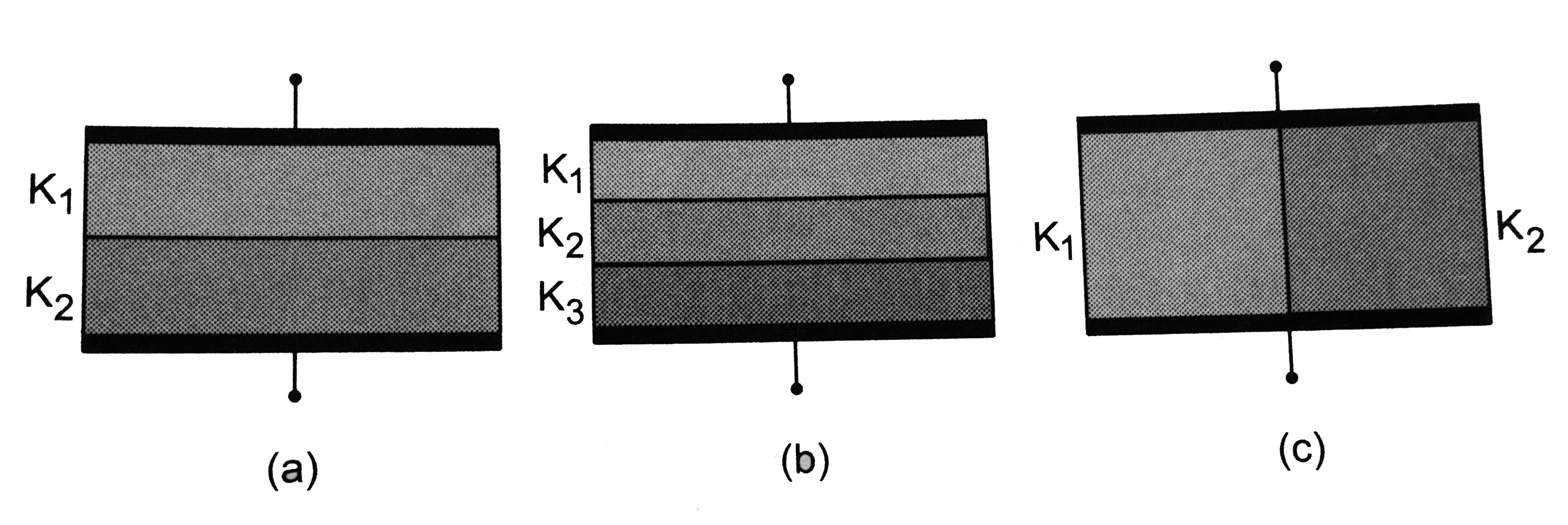
C1=K1eplison0Ad2,C2=K2eplison0Ad2
C2=2K1eplison0Ad,C2=2K2eplison0Ad (fig)
C=C1×C2C1+C2
2K1ε0Ad×2K2ε0Ad2K1ε0Ad+2K2ε0Ad
2K1K2ε0Ad(K1+K2)<br>(b)Similarlyas(a)butthisfigurethreeparts<br> C_1 = K_1 epsilon_0 A / (d /3) = 3 K_1 epsilon_0 A / d <br>(fig.)C_2 = 3 K_2 epsilon_0 A / d <br>C3=3K3ε0Ad
C = C_1 xx C_2 xx C_2 / C_1 C_2 + C_2 C_3 + C_3 C_1 <br> = 3 epsilon_0 K_1 K_2 K_3 / K_1 K_2 + K_2 K_3 + K_3 K_1<br>(c)C1=K2ε0A2d=K1ε0A2d
C_2 = K_2 epsilon_0 A / 2d <br>Thesetwopartare∈paral≤l,<br>So, C = C_1 + C_2 <br> = epslion_0 A / 2d (K_1 + K_2).
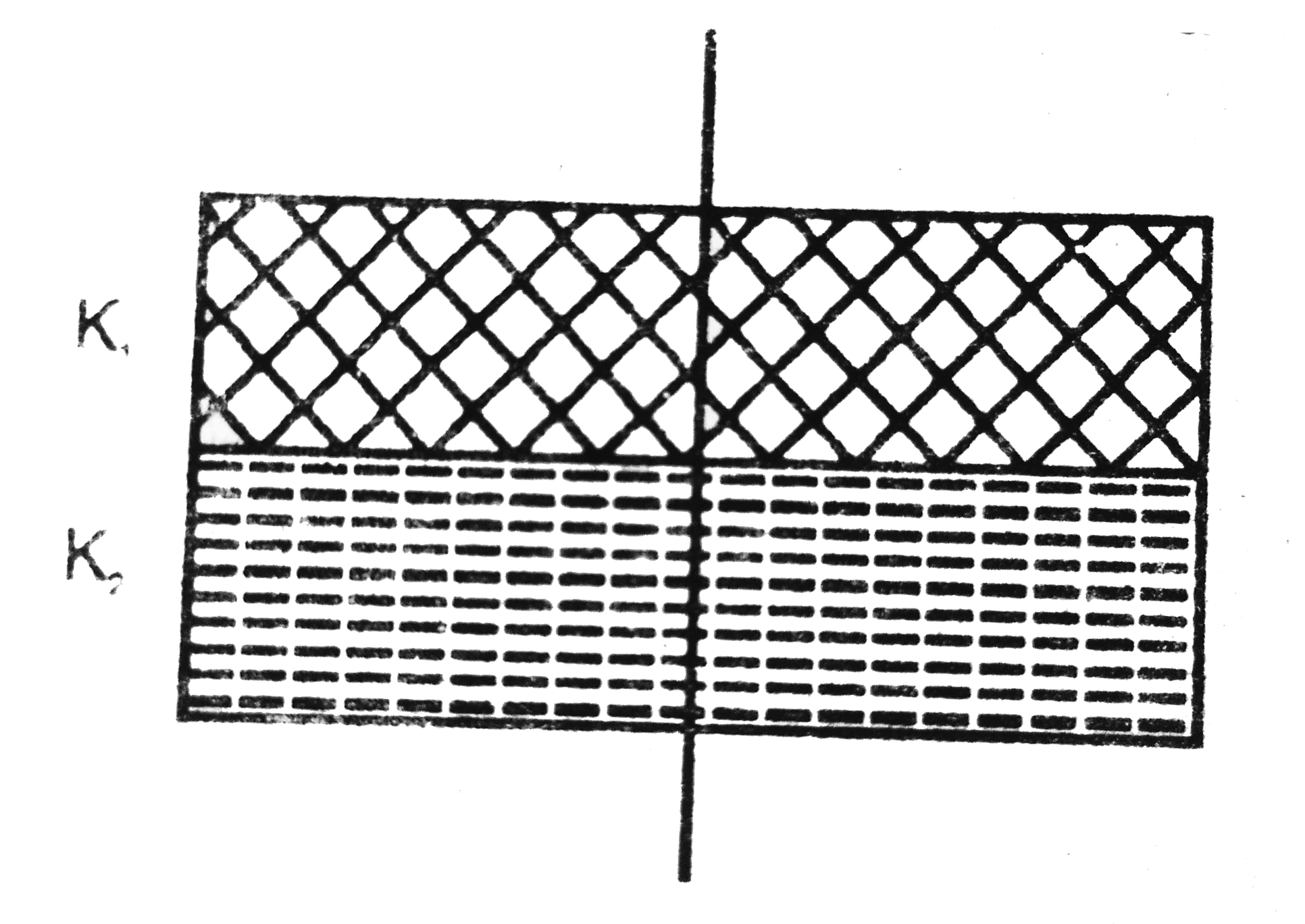 ,
,

Topper's Solved these Questions
- CAPACITORSBOOK - HC VERMACHAPTER - CAPACITORSEXERCISE - Exercise
2 Videos
- CAPACITORSBOOK - HC VERMACHAPTER - CAPACITORSEXERCISE - Objective 2
7 Videos
- BOHR'S MODEL AND PHYSICS OF THE ATOMBOOK - HC VERMACHAPTER - BOHR'S MODEL AND PHYSICS OF THE ATOMEXERCISE - Exercises
46 Videos
- DISPERSION AND SPECTRABOOK - HC VERMACHAPTER - DISPERSION AND SPECTRAEXERCISE - Exercises
11 Videos
Similar Questions
The capacitor shown has square plates of side "L" and has gap d between the plates.If the dielectric constant of the material of the slab is "k" ,the capacitance of the capacitor is
View SolutionExplain why the capacitance of a parallel plate capacitor increases when a dielectric slab is introduced between the plates.
View Solution
Knowledge Check
In a parallel-plate capacitor, the region between the plates is filled by a dielectric slab. The capacitor is connected to a cell and the slab is taken out. Then
Asome charge is drawn from the cellBsome charge is returned to the cellCthe potential difference across the capacitor is reducedDno work is done by an external agent in taking the slab outA parallel plate capacitor has plate area A and plate separation d. The space between the plates is filled up to a thickness x<d with a dielectric constant K. Calculate the capacitance of the system.
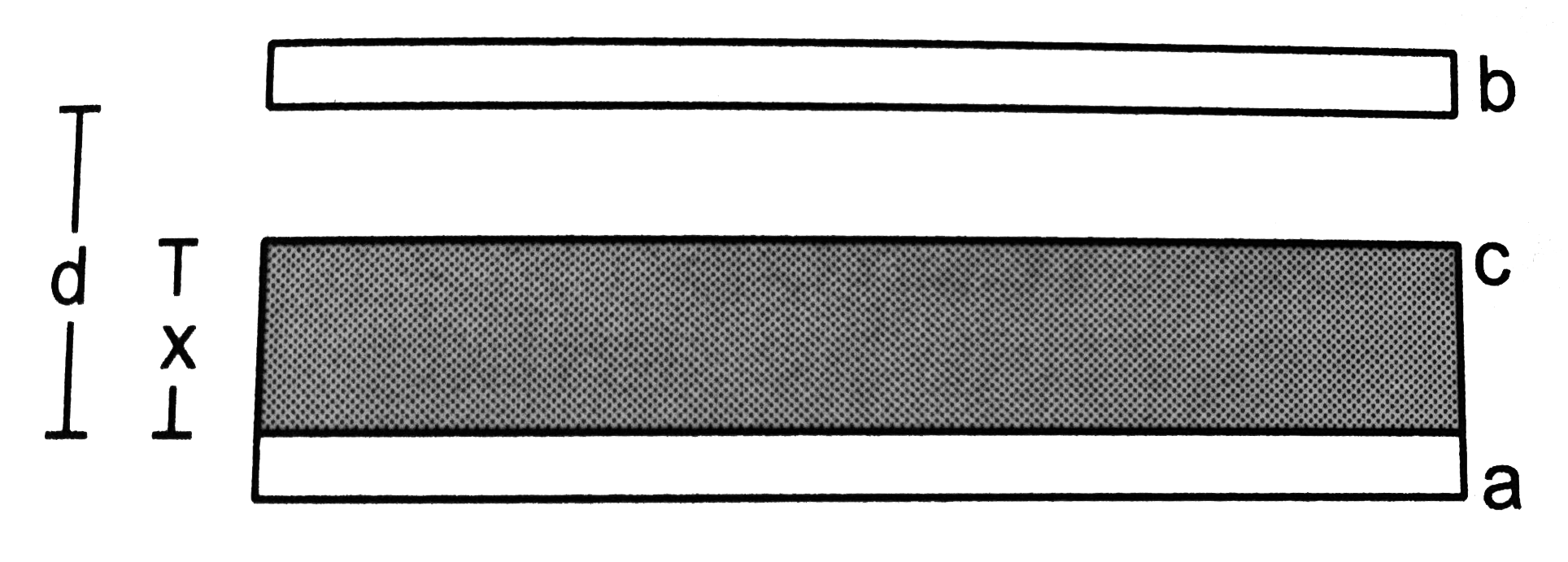 A2KεAKd−x(K−1)BKεAK2d−x(K−1)CKεAK−x(K−1)DKεAKd−x(K−1)
A2KεAKd−x(K−1)BKεAK2d−x(K−1)CKεAK−x(K−1)DKεAKd−x(K−1)
Fig shows a parallel plate capacitor of plate area A and plate separation d. Its entire space is filled with three different dielectric slabs of same thickness. Find the equivalent capacitance of the arrangment.
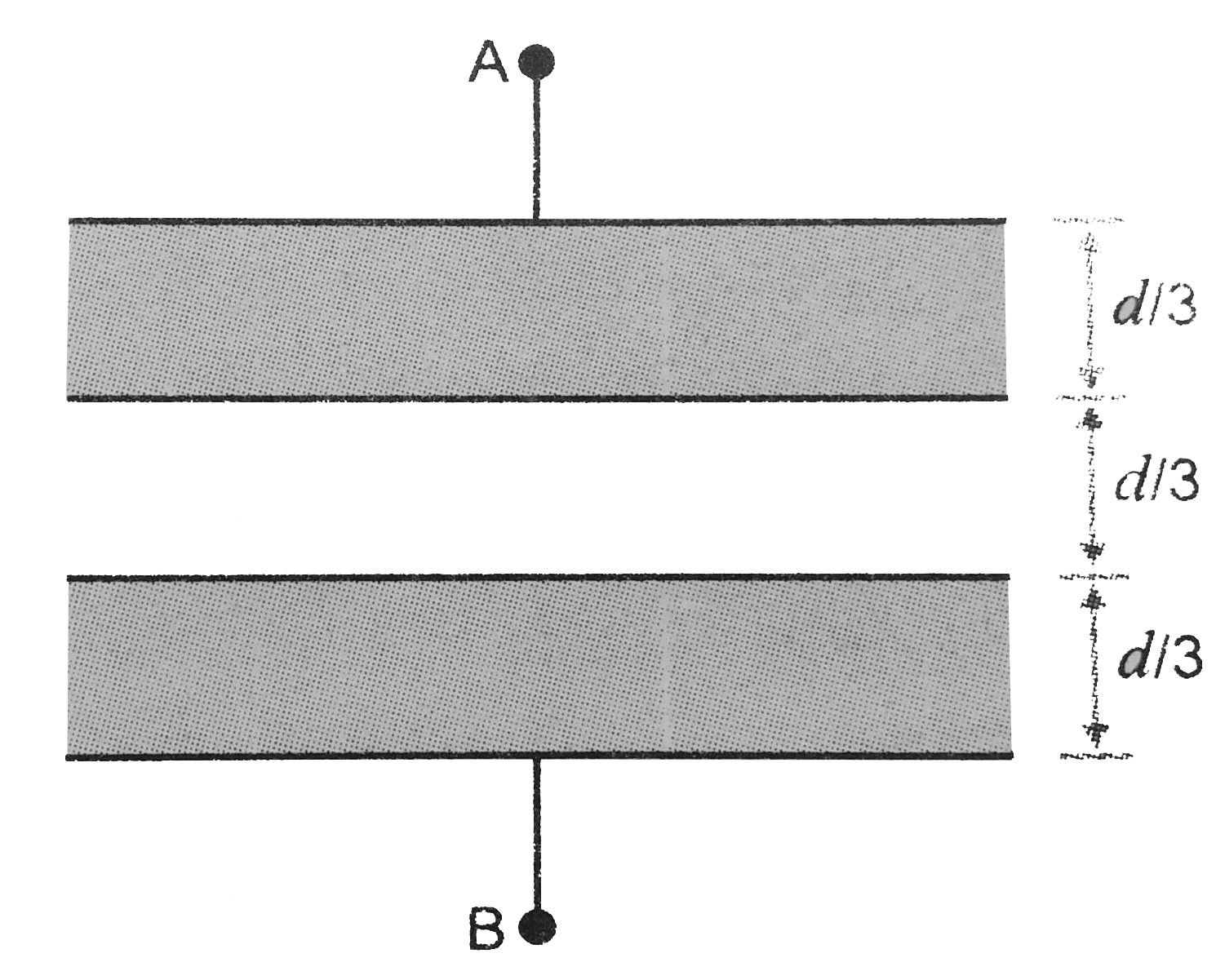
View SolutionA parallel-plate capacitor with plate area A has separation d between the plates. Two dielectric slabs of dielectric constant K1 and K2 of same area A/2 and thickness d/2 are inserted in the space between the plates. The capacitance of the capacitor will be given by :
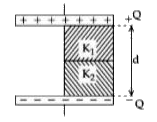
View SolutionThe capacitance of a parallel plate capacitor with plate area A and separation d is C. The space between the plates in filled with two wedges of dielectric constants K1 and K2 respectively. Find the capacitance of resulting capacitor.
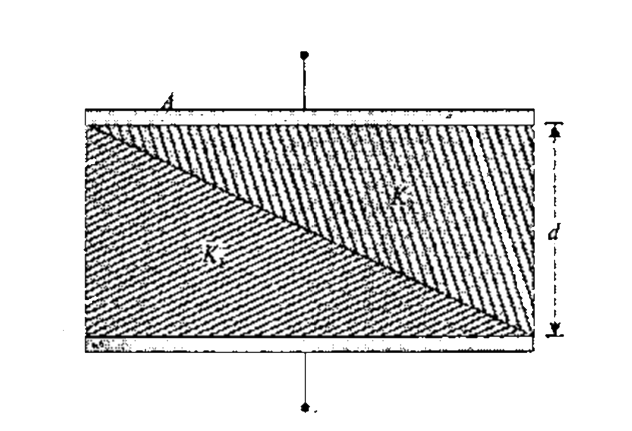
View SolutionThe capacitance of a parallel plate capacitor with plate area A and separation d is C. The space between the plates in filled with two wedges of dielectric constants K1 and K2 respectively. Find the capacitance of resulting capacitor.

View SolutionTwo parallel plate of area A and separated by two different dielectric as shown in the figure. The net capacitance is
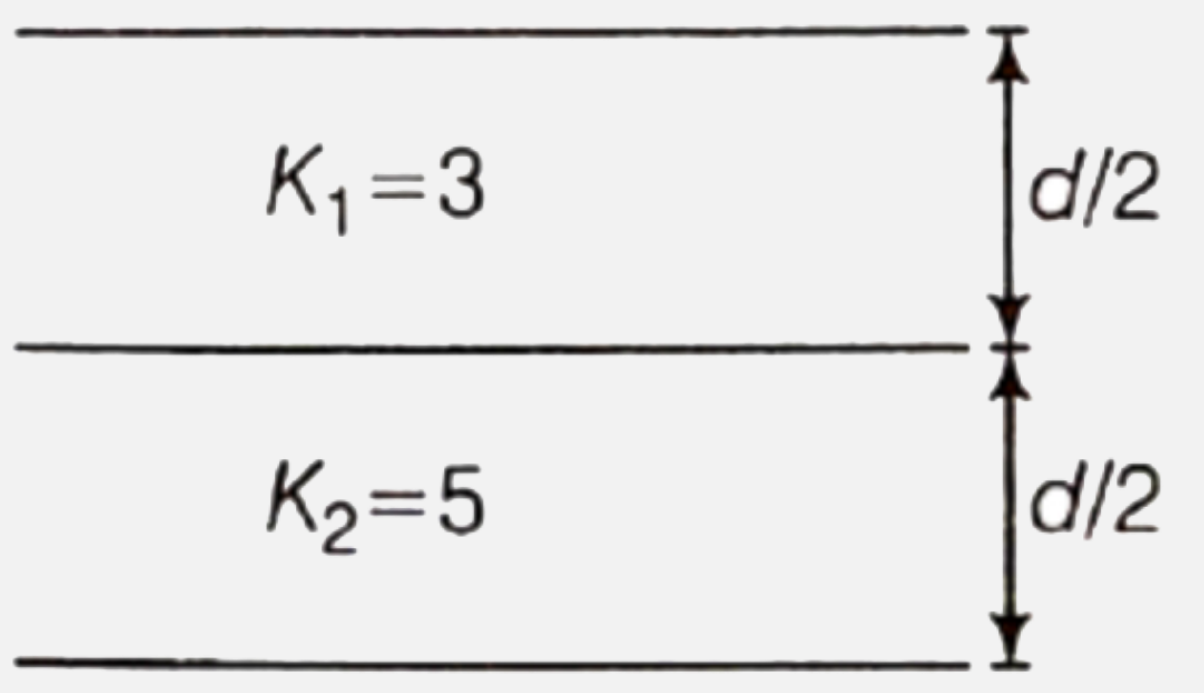
View SolutionA parallel plate capacitor with plate area A and separation between the plates d is filled with different dielectrics as shown in the figure. If the equivalent capacitance between a&b is mAε0nd then find the value of (m+n), where m and n are least positive integers.
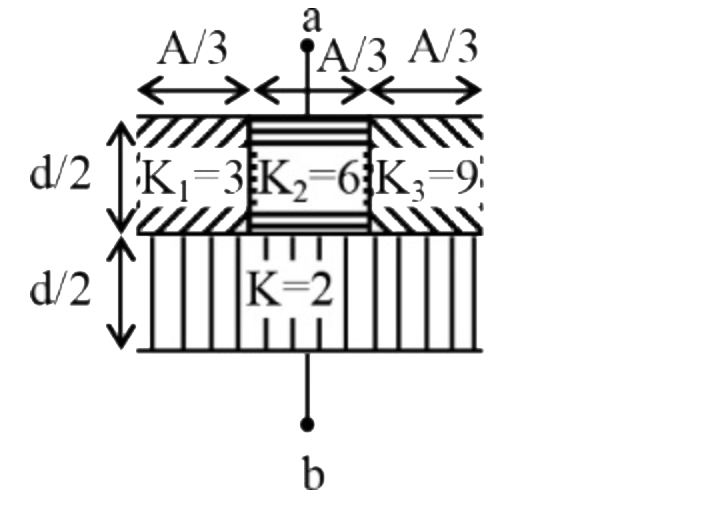
View Solution
